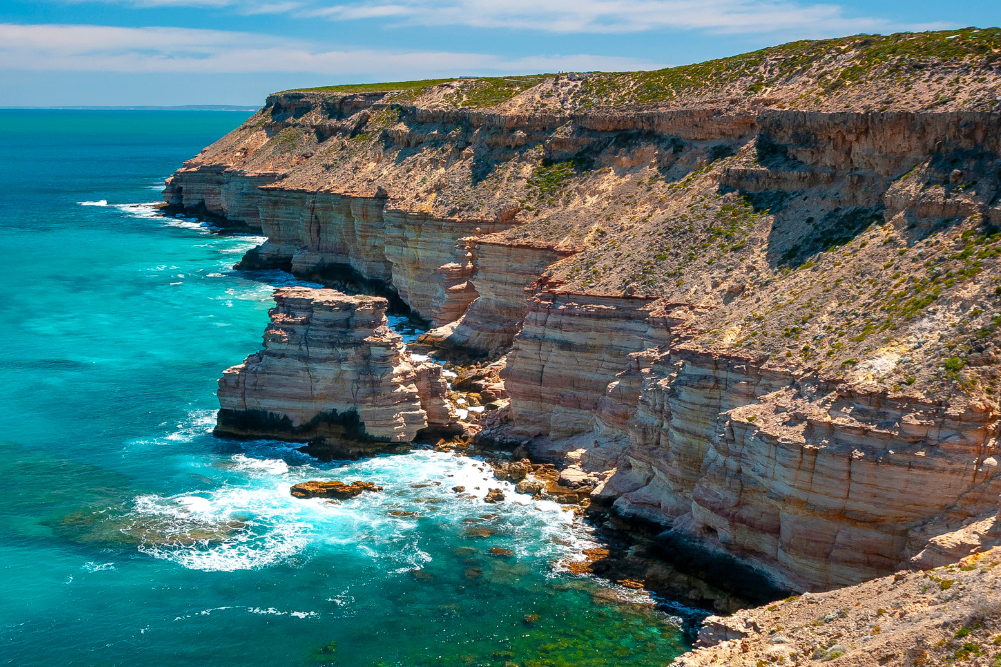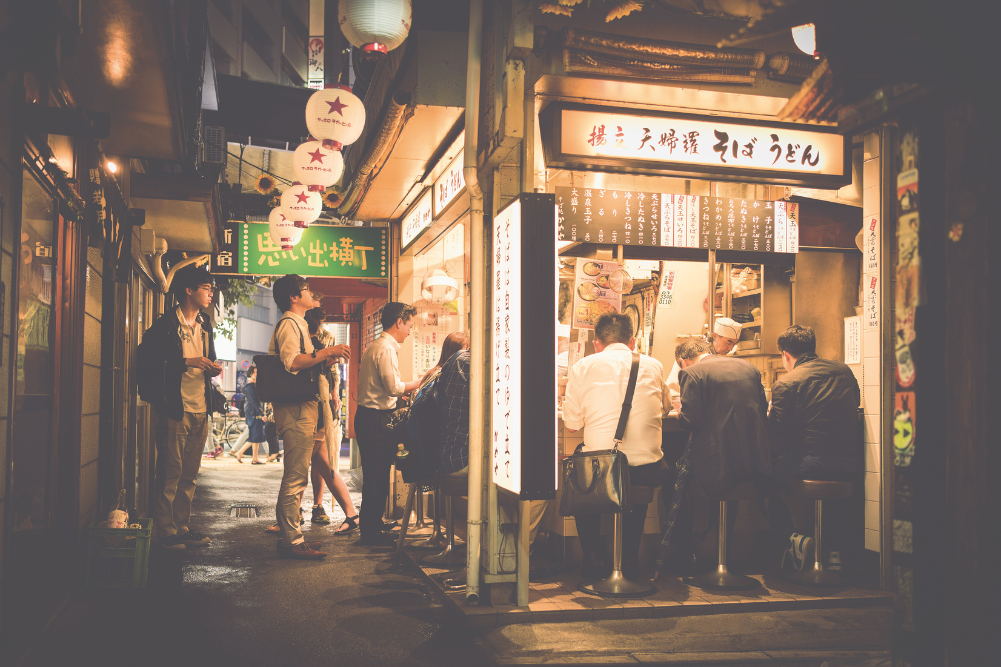Driving the Great Barrier Reef
A vivid tangle of rainforest rises above the Coral Sea, a patchwork of blue hues washing over coral reefs and barely-there sand cays. Carved on a knife-edge, where the forest and ocean meet, stretches a skinny twist of road with scenes so dazzling that it slows the traffic to a distracted pace.
It’s quintessentially tropical – even the “traffic” amounts to a handful of hire cars – and fringed with coconut palms and ice creameries selling mango and wattleseed ices. Travellers on the Great Barrier Reef Drive lurch from one spring-fed rock pool to the next, searching for cassowaries and under-the-stars rainforest magic.
Despite its grand name, this impossibly scenic drive covets only a tiny, albeit stellar, section of the far-north Queensland coastline. At just 140km long, you could drive it in a day, but where the Great Barrier Reef Drive ends, the rugged Bloomfield Track takes the baton, leading on to Cooktown through a wild and pristine backwater.
Resisting the five-star charms of Port Douglas en route will be no easy feat, but with two weeks up my sleeve and just a handful of bookings to hold the itinerary together, I put Cairns in my rear-view mirror and hit the road.
Close to the coast
A sea breeze finds me at Ellis Beach, shaded by lush, fruiting mango trees and giant paperbarks. There’s a gentle swell rolling in across the Coral Sea, carrying body surfers and boogie boarders back to the sand. I queue for coffee among leather-clad motorbikers preparing for a white-knuckled ride north, then wander with my brew to soak in a freshwater stream, staring out to sea. Just 20km outside of Cairns, this adventure has barely begun, but I’ve managed to fritter away a morning feeling utterly content.
When I do dry off and continue driving north, I’m pulled over again within minutes at the impossibly bewitching Gatz. Piled skywards in towering stacks at the southern end of Wangetti Beach, hundreds of sea-smoothed stone creations form one of the north’s most dynamic art installations. Created by the hands of a thousand travellers, they are forever changing shape, tumbling at the mercy of the wind and waves.
No one remembers when these rock cairns first took shape, but I’ve always considered it auspicious to add a rock or two. Some consider The Gatz a dangerous roadside distraction, but it’s also a bewitching, ephemeral reminder that things of beauty are seldom built to last.
Just 30 minutes up the road, Port Douglas beckons travellers with five-star comfort and a hundred ways to fill your days. It does beachy, laid-back luxury like no other destination, and its wild, natural location thrills even the most jaded of visitors. While I could spend a week freewheeling on Four Mile Beach and snorkelling, sailing and sipping cold brews with sand on my feet, I resist all these temptations, pocket my wallet and drive north to the Daintree instead.
Chasing waterholes
Rich in Kuku Yalanji culture and occupying a rugged slice of Daintree National Park, Mossman Gorge is famed for its chilly tropical swims. Surrounded by towering rock and verdant rainforest, deep clear waterholes gather along the swift-flowing creek, filled with toe-tickling jungle perch and giant granite boulders. In the quiet hours of day, the gorge positively hums with birdlife, but so popular has it become that visitors must park and ride the communal bus, arriving early to beat the crowds.
I meet a similar kind of hectic when I reach the Daintree River, too. Parked at the ferry crossing, waiting for passage across, the riverbanks are abuzz with wildlife spotters of all kinds. There are anglers chasing barramundi, birders with binoculars and croc-spotters with eyes peeled for the north’s most superior hunter to surface in the Daintree’s murky, muddy flow.
I eyeball the river as I ride the vehicular ferry across, but the only crocs I see are the ones on bumper stickers. Instead, I spend a day hiking in search of less threatening wild things – Daintree River ringtail possums and spotted-tailed quolls, both found only in the Daintree’s rare Gondwanaland rainforests.
The sacred lands of the Eastern Kuku Yalanji people are what scientists call a “Living Ark”, sheltering most of the 19 most primitive plants left on the planet. The only way to truly appreciate any of what this means is by strapping on shoes and taking a hike. The Jindalba trail offers respite from the midday sun, luring me in search of endangered southern cassowaries on an hour-long, shady circuit. The world’s most at-risk, flightless ratite doesn’t reveal itself in the forest, but I later glimpse one crossing the road on the drive to Cape Tribulation.
I head for Emmagen Creek and cool my heels, wandering upstream to slide into my own private, chilly pool. Just across the stream, the Bloomfield Track beckons, but I’m not ready yet. I backtrack to wander through cannonball mangroves on the Marrdja Botanical Walk, beneath arcing strangler figs and towering fan palms blooming with great sprays of delicate orchids.
The sun sets over Cape Tribulation and I chase bright Ulysses butterflies at dawn, climbing the rainforested saddle to Myall Beach in time for sunrise. I stand beneath Wundu – one of the wettest peaks in Australia – and watch stars appear from a sandy camp at Noah Beach. It’s a no-fuss option that’s far too rustic for some, but this slice of the simple life costs me $7.25 a night.
I save my splurge for Cooktown and set out the next day, crossing Emmagen Creek’s crystalline pools on a dusty, wilder drive.
Tackling the Bloomfield Track
It’s the wilderness drive with a controversial past, bulldozed through pristine rainforest back in 1984, despite Daintree Blockade protestors chaining themselves to the treetops and burying themselves up to their necks. Its very route was decided, some say, from the seat of a bulldozer, shamelessly slicing through one of the far north’s last bastions of remote tropical wilderness.
Depending on the season and how recently the graders have been through, the Bloomfield Track is either dusty and corrugated, or washed out and greasy, with heart-stopping hill climbs and equally thrilling descents. But what makes this a route worth tackling is what you’ll see along the way: deserted, palm-fringed Cowrie Beach, the wild bathing, turquoise pool at Woobadda Creek and one thundering, 40m-high waterfall at the head of the Bloomfield River.
The experience is all that I hope for and so much more, but it ends far too quickly as I splash across the Bloomfield River causeway and roll back onto the bitumen into Wujal Wujal. You might whizz through this town in a heartbeat, but you’d miss two fascinating things: shopping for silk clothing and canvases at the Bana Yirriji Art Centre (open Monday to Thursday and Friday mornings), and a guided tour to the base of the Bloomfield Falls.
The name “Wujal Wujal” literally mean “falls”, and local Kuku Yalanji (Goo-goo Ya-lan-gee) custodians host tours that showcase the sacred Bloomfield Falls and others hidden off the beaten track. Fortunately for me, I arrive soon after the wet season ends, when the Bloomfield thunders and plunges in a dramatic fury.
North of Wujal Wujal, a long sandy beach hugs Weary Bay where the offshore Endeavour Reef snagged Lieutenant James Cook back in 1770. Today’s boaties stake out rustic retreats nestled along the beach and battle the Bloomfield’s elusive barramundi. I dive back into the forests just beyond, where the misty flanks of Mount Finlay feed Wallaby Creek as it thunders over magnificent, multi-tiered Home Rule Falls.
Forest bathing and Black Mountain
Swirling into whirlpooling rock cauldrons and rushing away to fill deep pools downstream, the falls find their serenity on the edge of Homerule Rainforest Lodge. Translucent beyond belief, Wallaby Creek is pristine and perfect for drift-snorkelling in the current beneath the shady rainforest canopy. There are cool, waterfront campsites and cabins, and the river’s favourite namesake festival celebrates music and the arts here every September.
The historical Lions Den Hotel pulls thirsty travellers off the road to swig cold beers in a bar slung with funky, far northern memorabilia and just a touch of madness. I carry a coldie to Annan Gorge and soak in the sandy pool above the falls that separates me from crocodiles far below.
Between here and Cooktown, 25km away, the road rising over Black Mountain and its towering jumble of giant granite boulders. Known to the Kuku Bididji as “Kalkajaka” or “spear place”, the mountain’s mysterious black tors and its labyrinth of hidden chambers is a place of dark magic where innocent souls are lost. The folklore serves to keep climbers off the rocks and everyone admires the mountain from afar, saving their wanderlust for Cooktown.
Cook’s Town
When Cook’s HMB Endeavour struck an uncharted reef off Weary Bay, the man credited with “discovering” Australia found himself in a desperate situation. In Cooktown he found salvation, driving his floundering ship into the sheltered shallows of the Waalmbal Birri (Endeavour River). His subsequent interactions with traditional Guugu Yimithirr people camped ashore helped to shape a version of Australia’s history, and today, Cooktown memorialises James Cook with astounding repetition.
On a walking tour through town, I pass Cook’s bronze statue, Cook’s cairn and spend an afternoon at the James Cook Museum where Cook’s original ship’s anchor rests. When I climb Grassy Hill Lighthouse for lofty sunrise views, I find myself standing where Cook himself once did, searching for a break between treacherous reefs.
The more I explore, the more James Cook infuses my days. While I’m too early to catch the town’s uber-popular Discovery Festival, I climb to the summit of Mount Cook (in Mount Cook National Park no less) and wander through shady groves where plant species collected in 1770 by Cook’s team – Joseph Banks and Daniel Solander – bloom on in Cooktown’s Botanic Gardens.
The vibe around Cooktown is harmonious and laidback, and a rich Indigenous heritage and lively art scene pervades the public spaces too. The 12-metre-long Milbi (story) Wall stakes out the waterfront, and I wander through the Kuku Bulkaway art centre where sales of canvases and flamboyant painted silks support the region’s Indigenous ranger program.
The Great Barrier Reef stretches a long way north, but the best of its namesake drive is behind me. I take in one final ocean vista from the top of Grassy Hill, then double back down the track to do it all again.
Escape routes
Go: The Great Barrier Reef Drive stretches for 140km from Cairns to Cape Tribulation (via sealed roads). A 4WD adventure continues along the Bloomfield Track via Wujal Wujal and Wallaby Creek to Cooktown (110km).
Visit: From May to September, the far north’s dry season brings clear, sunny skies, mild temperatures and stinger-free seas.
Stay: South of Cooktown and surrounded by a WHA, Mungumby Lodge is a private nature refuge with double cabins from $220/night. At Cape Tribulation, solar-powered stays at Noah Creek Eco Huts start from $195/night (noahcreek.com.au). Basic beachfront campsites in Daintree National Park (Noah Beach) cost $7.25/person/night.
Pack: Hiking sandals, swimwear, fishing rods, waterhole-friendly sunscreen, natural insect repellent, refillable water bottles and a sense of adventure.
Be croc aware: Far north Queensland is home to estuarine crocodiles that may be present in rivers, creeks and waterholes. Always obey signage highlighting their possible presence and if in doubt, stay out of the water.
Don’t miss: Cairns Indigenous Art Fair (July 25-28), Taste Port Douglas (August 8-11), Cairns Festival (August 23 to September 1), Wallaby Creek Festival (September 20-24).
More information: Plan national park hikes and book campsites at parks.des.qld.gov.au. For trip inspiration, head to wildtravelstory.com or tropicalnorthqueensland.org.au.








